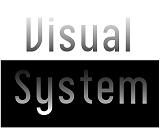A reliability agreement and correlation are two statistical concepts that are commonly used in research, particularly in social science studies. These concepts are crucial in determining the accuracy and consistency of research findings, and they help researchers interpret their results correctly.
Reliability Agreement
Reliability refers to the consistency of measurement over time or across different researchers. A reliability agreement measures the extent to which two or more researchers agree on the same set of findings. This measure is critical in ensuring that research findings are robust and reliable.
One common method used to assess reliability is the inter-rater reliability agreement. This method involves two or more researchers independently assessing the same set of data. The level of agreement between the researchers is then assessed using a statistical measure such as the Cohen’s kappa coefficient. A kappa coefficient of 1 indicates perfect agreement while a coefficient of 0 indicates no agreement.
Another method used to assess reliability is the test-retest reliability agreement. This method involves administering the same test to the same group of participants on two different occasions. The level of agreement between the two sets of test scores is then assessed using a statistical measure such as the Pearson correlation coefficient.
Correlation
Correlation, on the other hand, measures the strength of the relationship between two variables. In research, correlation is used to determine if there is a relationship between two variables. A correlation coefficient ranges from -1 to +1. A correlation coefficient of +1 indicates a perfect positive relationship between the two variables. Conversely, a correlation coefficient of -1 indicates a perfect negative relationship between the two variables. Finally, a correlation coefficient of 0 indicates no relationship between the two variables.
There are several types of correlation coefficients, including Pearson’s correlation coefficient, Spearman’s rank correlation coefficient, and Kendall’s tau-b correlation coefficient. Pearson’s correlation coefficient is the most commonly used correlation coefficient in research.
Applications of Reliability Agreement and Correlation
Reliability agreement and correlation are essential in research for several reasons. First, they help researchers determine if the findings are reliable and consistent over time. If the results are not consistent across different measurements, then it is challenging to make conclusions based on the data.
Secondly, correlation helps researchers determine if there is a relationship between two variables. If there is a relationship, then the researcher can make predictions about how changes in one variable will affect the other variable.
In conclusion, reliability agreement and correlation are essential statistical concepts in social science research. They help researchers determine the consistency of research findings and the strength of the relationship between two variables. Understanding these concepts is crucial for interpreting research findings accurately and making valid conclusions.
